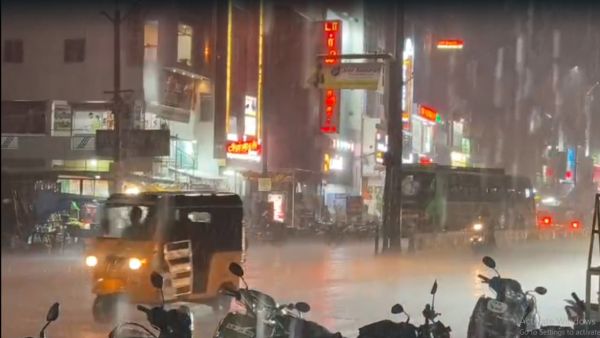- When you’re watching your blood sugar, it’s easy to assume pasta is off the menu.
- However, some types of pasta are rich in blood sugar–leveling protein and fiber.
- We asked dietitians the best pasta for healthy blood sugar. They unanimously said chickpea pasta.
A warm, saucy bowl of pasta can instantly transport your taste buds to a place of bliss. But if you’re watching your blood sugar, you may have heard that pasta shouldn’t be a nightly event. So, we asked four registered dietitians to share the best pasta for blood sugar management, and they all said the exact same thing: chickpea pasta.
“Chickpea pasta is an excellent selection because it’s made from legumes, [which provide] a combination of carbohydrates, protein and fiber,” says diabetes educator Amy Kimberlain, M.S., RDN, CDCES. “This combination helps slow down the digestion and absorption of carbohydrates, resulting in a more gradual rise in blood sugar levels compared to a rapid increase.” Skeptical about its taste? Even die-hard purists may not notice the swap. Chickpea pasta looks, cooks and tastes surprisingly like traditional pasta. But it has multiple nutritional advantages and blood sugar benefits. Read on, as we dig into why chickpea pasta gets the thumbs-up for better blood sugar.
Why Chickpea Pasta Is Our #1 Pick for Better Blood Sugar
High in Fiber
Whether it’s spaghetti, penne or farfalle, traditional pasta is typically made of durum wheat flour. Because it’s refined, it contains quickly digested carbohydrates that are low in fiber. This can cause your blood sugar to spike, especially if pasta is the only thing in your bowl.
Chickpea pasta, on the other hand, is made from chickpeas (aka garbanzo beans). Yes, it contains carbs. However, it also provides blood sugar–stabilizing fiber and protein. “Chickpea pasta delivers significantly more fiber than traditional refined wheat pasta, and this fiber helps slow digestion and the release of glucose into the bloodstream,” explains Sapna Peruvemba, MS, RDN.
Ashley Hawk, M.S., RDis also a fan of adding fiber to your pasta bowl. “I like to think of fiber as the traffic controller for your digestion. It helps slow down how quickly food breaks down and sugar hits your bloodstream,” she explains. And chickpea pasta is filled with it. Two ounces of dry, uncooked chickpea pasta provides an impressive 8 grams of fiber. That’s roughly 30% of your daily requirement in one small serving and more than four times the amount in a similar-size serving of traditional pasta.,
Rich in Plant Protein
Chickpea pasta also contains good-for-you plant-based protein. “Even though you’re still getting a good amount of carbohydrates from chickpea pasta, the protein content in it can help stabilize blood sugar levels by slowing glucose absorption,” says Peruvemba. A standard 2-ounce serving of uncooked chickpea pasta packs about 11 grams of protein. That’s nearly 60% more than the 7 grams you’d get from regular pasta.
Thanks to chickpea pasta’s hefty protein content, there’s no need to add chicken, fish or shrimp to your dish to up its protein. Chickpea pasta’s plant protein may be especially advantageous when you’re watching your blood sugar. Research shows that consuming more animal protein may increase the risk of type 2 diabetes. Conversely, swapping in plant-based protein like the kind in chickpea pasta has been found to improve insulin sensitivity, help with weight management and lower overall diabetes risk.
Supports Healthy Gut Bacteria
Turns out what you feed your gut impacts far more than just your digestive health. It can influence your entire body, including your blood sugar. “The fiber found in chickpea pasta can act as a prebiotic in the body, which helps feed the good bacteria in the gut,” explains Samantha MacLeod, M.S., RDN. “Feeding the good bacteria can help promote a healthy microbiome, which studies have shown can improve blood sugar control.”
On the other hand, research has found that an imbalance in gut bacteria can lead to poor blood sugar regulation and increased insulin resistance. The prebiotic fibers in chickpea pasta may help cultivate a healthy microbiome, which may lead to improved gut health, glucose metabolism and insulin sensitivity.
Has a Low Glycemic Index
The glycemic index (GI) measures how quickly a food raises your blood sugar levels. How does it work? Carbohydrate-containing foods are assigned a number on the GI scale. Those with lower numbers tend to promote a slower, steadier glucose release, while higher numbers are associated with rapid increases in blood sugar.
”Foods with a lower GI, like chickpea pasta, break down more slowly, helping prevent sharp spikes and crashes. It’s one reason why this swap feels just as satisfying but leaves you feeling better long after the meal,” says Hawk. As helpful as chickpea pasta is for preventing these spikes, there’s a trick to make it even better: eat it cold in a chickpea pasta salad. The reason? Cooling pasta in the fridge after cooking alters its starch composition for the better, significantly lowering its GI.
Tips to Enjoy Pasta for Healthy Blood Sugar
Experts agree you can have your cake—er, we mean pasta—and eat it too! Even if you choose traditional or whole-wheat pasta, there are ways you can enjoy all types of pasta and keep your blood sugar in a healthy range.
Below, our experts share their top tips to enjoy pasta without the sugar spike.
- Enjoy It as a Side Dish: Many people pile their bowls high with pasta for a main dish. However, Kimberlain recommends serving it as a side dish instead. Aim for a 2-ounce portion of dried pasta, which is roughly 1 cooked cup. Feel free to bulk it up by mixing in lots of nonstarchy veggies and a lean protein.
- Load Up on Veggies: Every dietitian we spoke to recommended loading your pasta bowl with plenty of veggies. “Always include veggies—whether stirred into the pasta or served on the side,” says Peruvemba. Their fiber helps slow down digestion and keeps blood sugar levels in a happy range. From raw to sautéed, roasted or grilled, the possibilities are endless.
- Add in Protein: Protein helps increase satiety and prevents jumps in blood sugar. Toss chicken, shrimp, salmon, ground turkey, beans or lentils into your pasta or enjoy them as a side dish with your pasta.
- Don’t Forget Healthy Fats: Fat helps you absorb fat-soluble vitamins, supports satiety and prevents blood sugar spikes. Peruvemba recommends drizzling either tahini, olive oil or a nut-based pesto over your pasta for healthy fats.
- Make Your Own Sauce: Skip the jarred or canned sauce and try this easy at-home version: “Simmer canned no-salt-added crushed tomatoes with garlic, a pinch of dried oregano, fresh basil and a drizzle of olive oil,” says Hawk. “It’s a simple way to cut back on sodium and added sugars that can sneak into store-bought sauces.” Plus, it only takes about 10 minutes to make!
Chickpea Pasta Recipes to Try
Our Expert Take
Four out of four dietitians agree that chickpea pasta is the No. 1 pasta for better blood sugar. It’s high in fiber, packed with plant-based protein, supports gut health and has a low glycemic index, which all help with blood sugar management. If you’re wondering if it’s still OK to have a little traditional pasta, the answer is yes. To keep blood sugar in check, dietitians recommend small portions of pasta enhanced with plenty of blood sugar–stabilizing nonstarchy veggies, lean protein and healthy fats. Nutrition pros are also big fans of whipping up your own pasta sauce to reduce added sugars and sodium. With these tips, you can build a balanced, blood sugar–friendly pasta meal no matter which noodles you choose.









